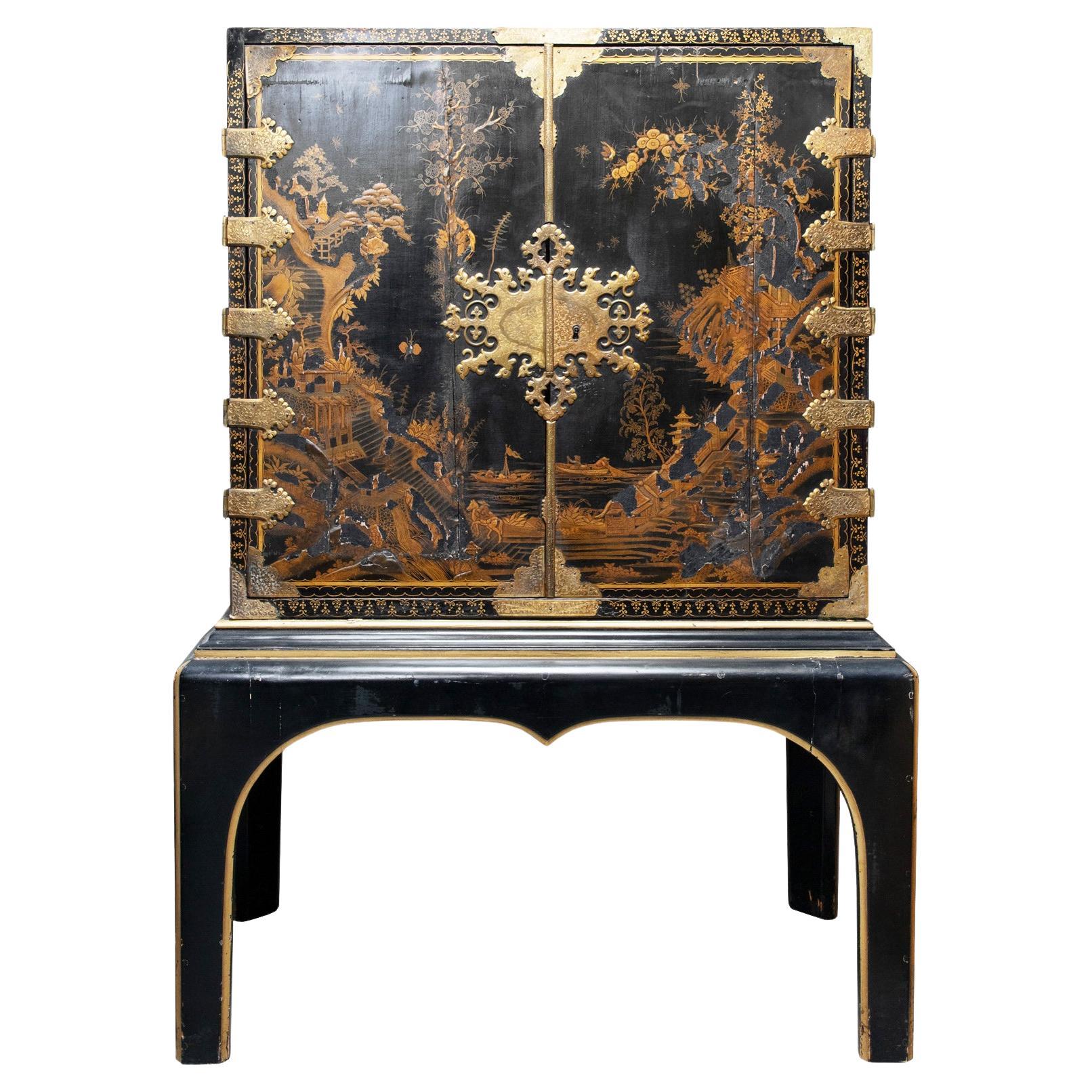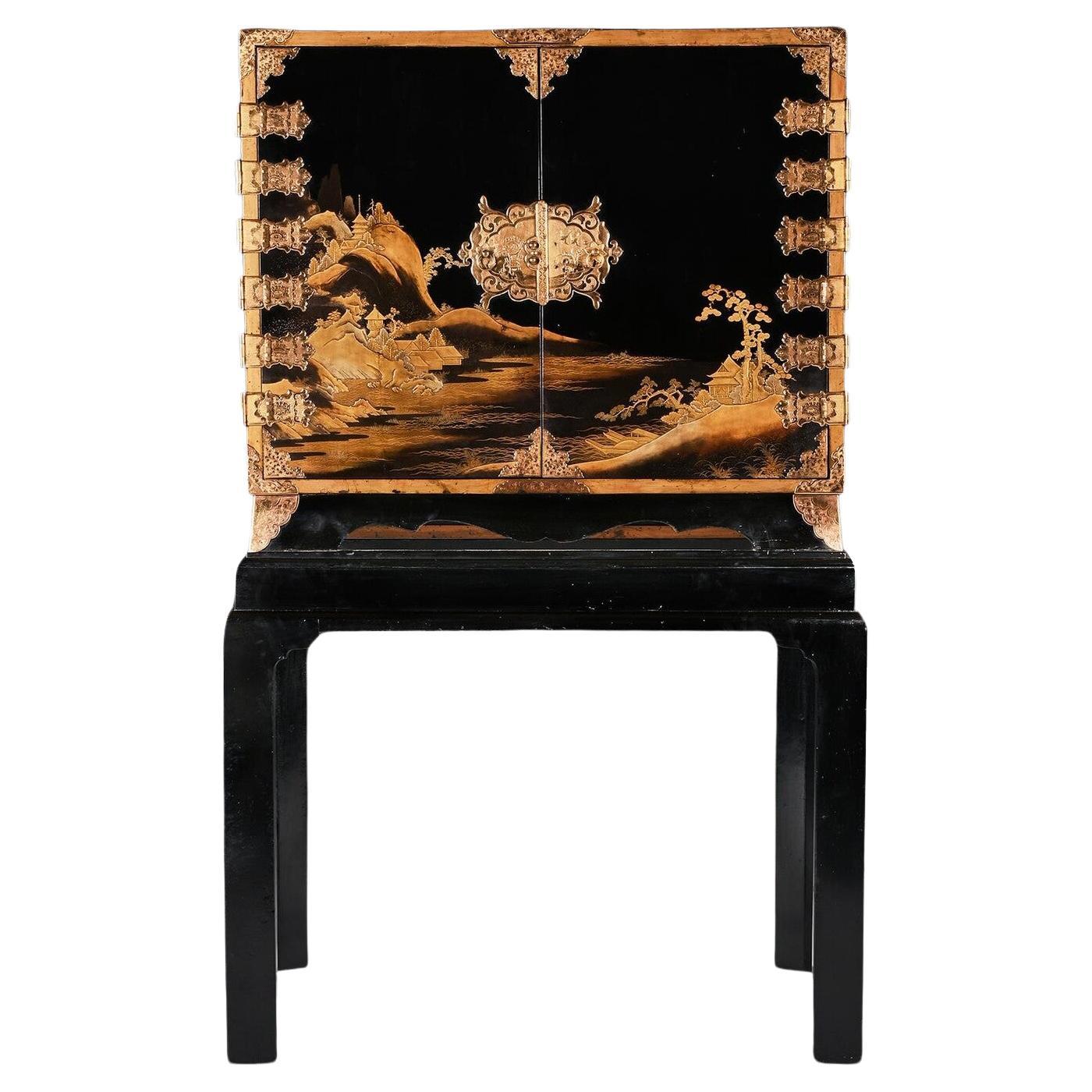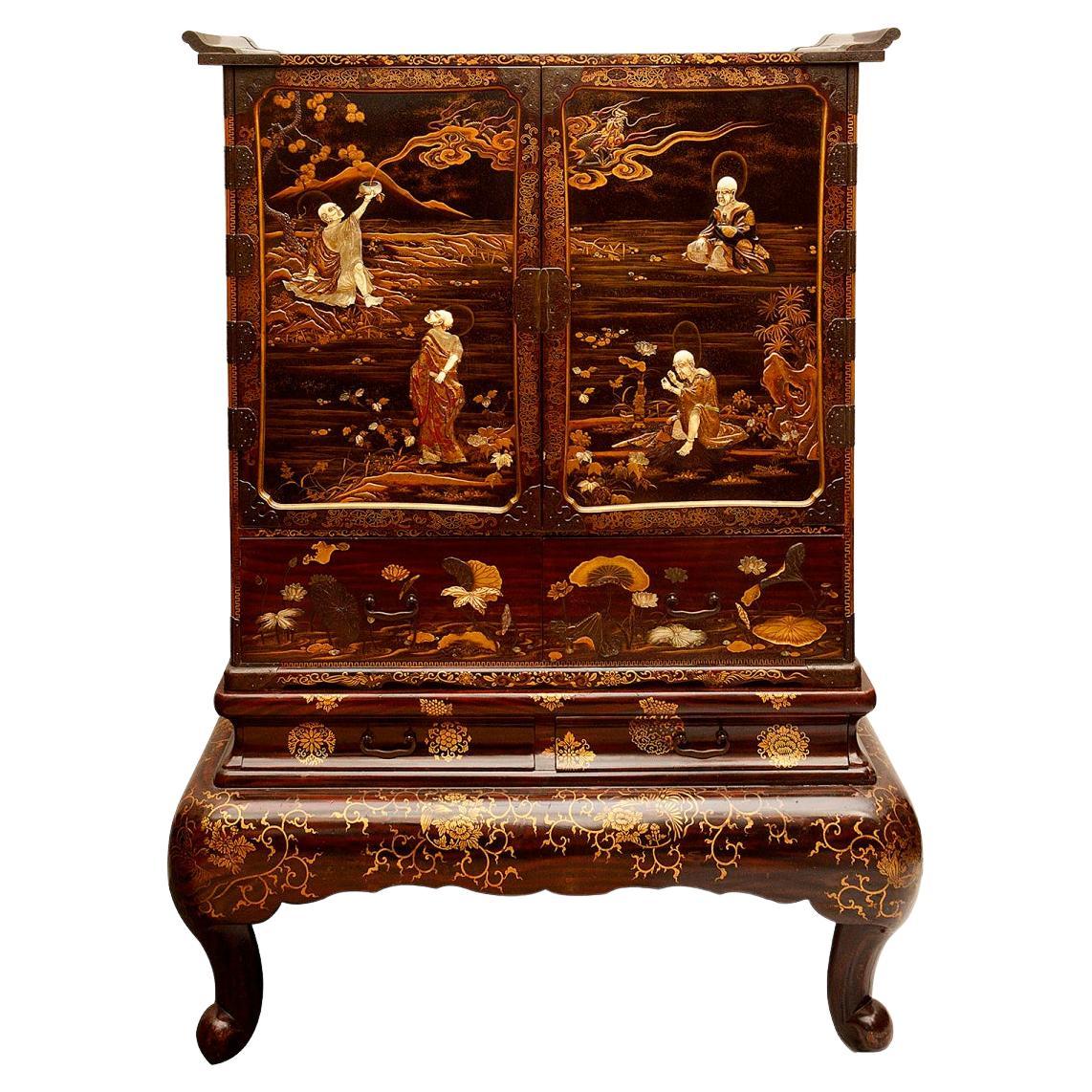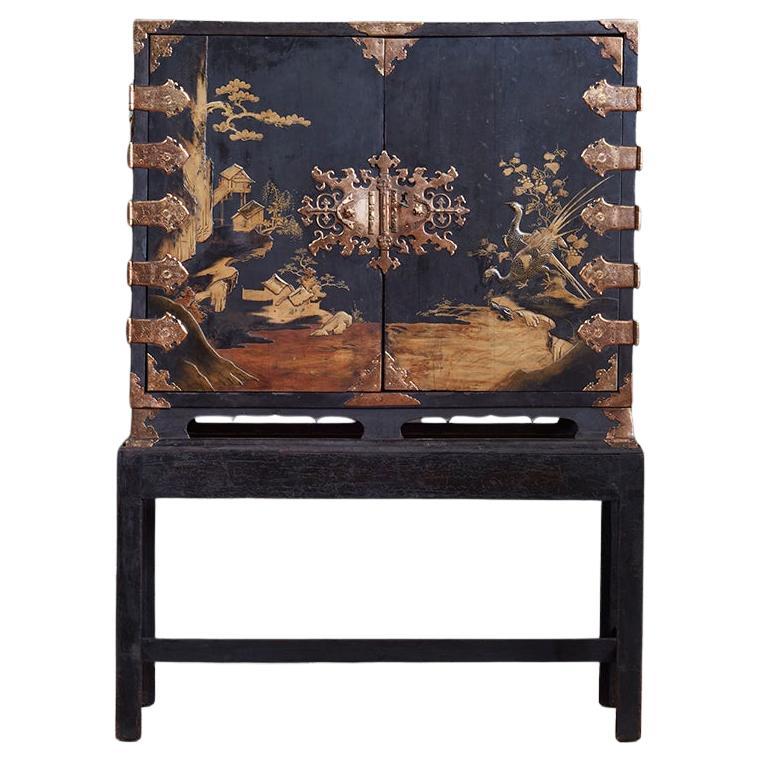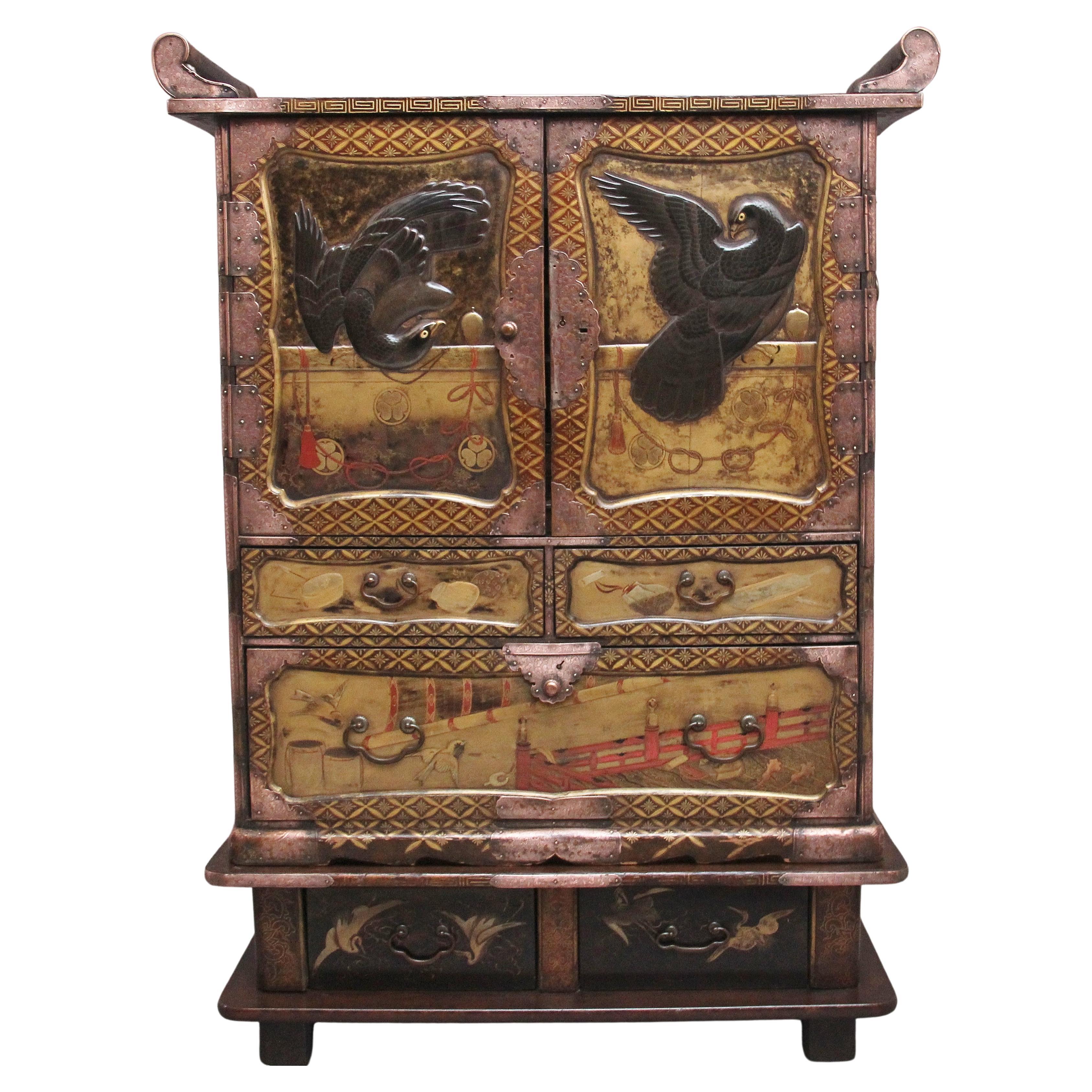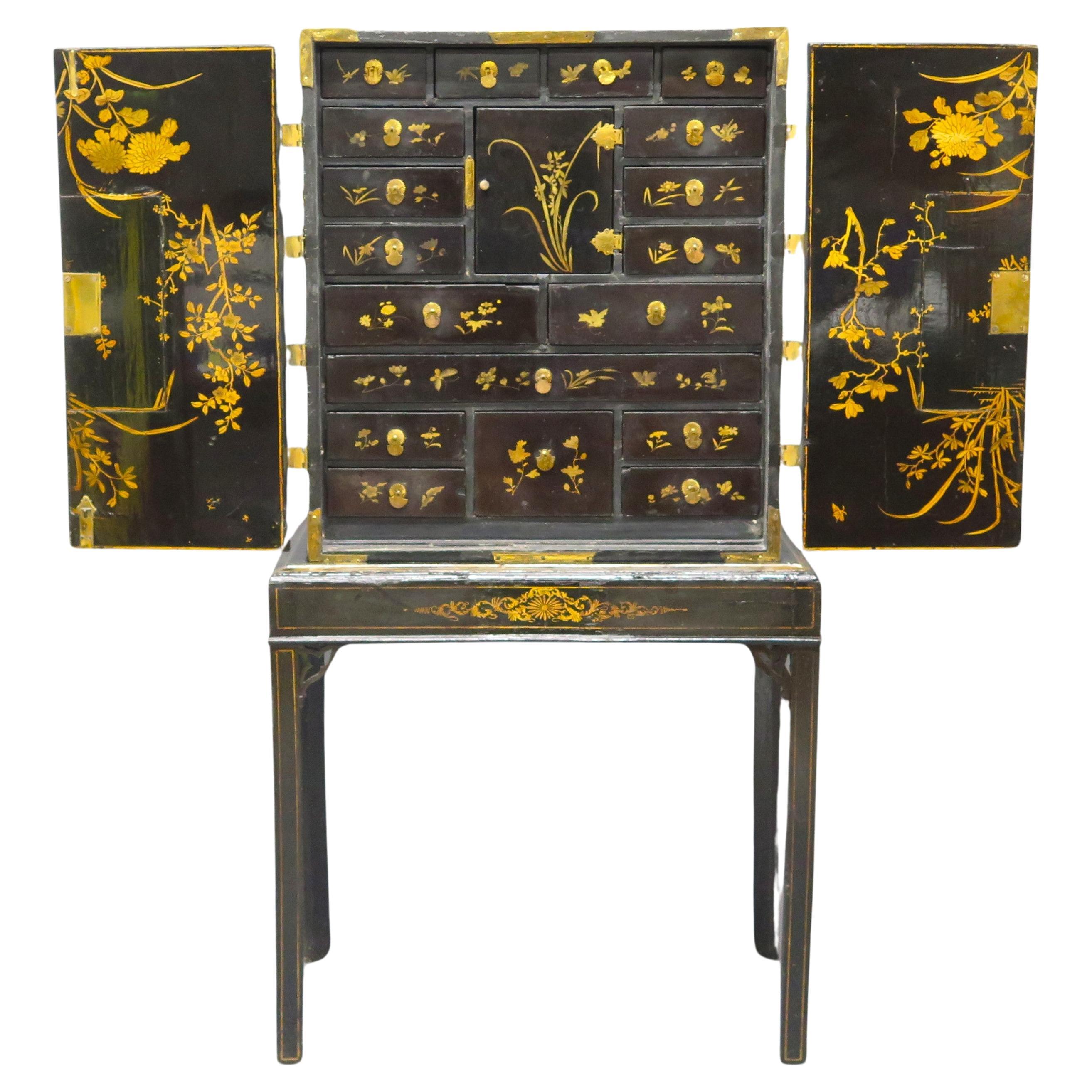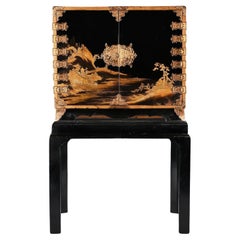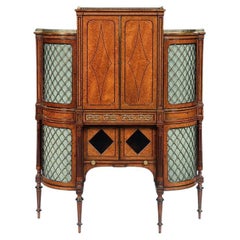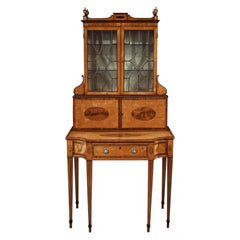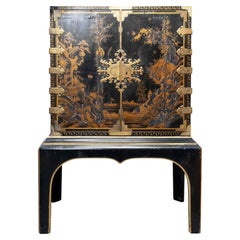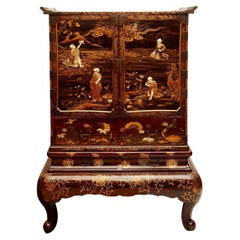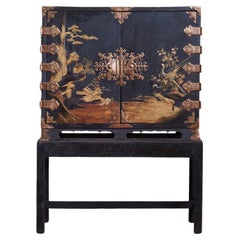Items Similar to 17th Century Japanese Lacquer Cabinet On French Giltwood Regence Stand
Want more images or videos?
Request additional images or videos from the seller
1 of 12
17th Century Japanese Lacquer Cabinet On French Giltwood Regence Stand
$130,131.39
£95,000
€111,452.72
CA$178,253.98
A$198,773.36
CHF 103,711.47
MX$2,439,024.08
NOK 1,320,081.75
SEK 1,250,748.78
DKK 831,812.88
Shipping
Retrieving quote...The 1stDibs Promise:
Authenticity Guarantee,
Money-Back Guarantee,
24-Hour Cancellation
About the Item
An Extremely Fine and Very Important 17th Century Japanese Lacquer Cabinet on French Giltwood Stand of Regence Period circa 1680-1690
Provenance
Likely acquired by Herman Willem Daendels (1762-1818)
Mr. Herman August Daendels (1918-2000), Amsterdam
Eurasia Antiques, Amsterdam
Biënnale des Antiquairs, Paris, 1998
Private Collection, Belgium
Kollenburg Antiquairs, Oirschot-chosen for the press release for the Art Affair Fair, Amsterdam, in 2020, Also taken to TEFAF Maastricht
A Private European collection
This fine Japanese lacquer cabinet or ‘Cantoor’ was presumably originally acquired by a French connoisseur due to the French Regence period base it sit upon. The craze for lacquer in the west from the 16th century onwards has been extensively documented and it is generally accepted that the finest of all lacquers, technically speaking, were those produced in Japan rather than China. This cabinet is one of the best examples of Japanese export lacquer.
The lacquer work on the cabinet, executed in a variety of techniques including Maki-e, is exquisite and survives in amazing condition. The front depicts a landscape with mountains, temples, trees and a river with flying phoenixes, the lacquered boarders are more of a powdered effect. Each door has five gilt metal engraved brass hinges with further engraved gilt metal mounts to protect the corners of the doors and the outer carcase. There is a two part gilt metal lock plate to the centre of elaborate design that is particularly finely executed.
The sides being decorated with feature scenes of flowers and insects, with large and impressive engraved gilt brass handles. Like all of the finest lacquer, the decoration is executed in a variety of levels of relief, making the scene much more three dimensional as a result.
With Japanese export lacquer there was a evolutionary sequence to stylistic change that can be traced back with some accuracy during the 16th and 17th centuries. The Namban lacquer of the late 16th century relied on highly wrought mother of pearl inlay and gold lacquer on a black ground. As the 17th century unfolded, there was progression towards a generally finer lacquer without the use of mother of pearl coupled with this was an increased interest in a more pictorial style with landscapes being used more extensively initially within boarders. Gradually by 1690’s the borders began to disappear from export lacquer work, so the fact that borders are still in evidence on our piece is further proof of being earlier than 1690 in date for the lacquer work.
Most early Japanese lacquer arrived in the west through the Portuguese mercantile companies but this changed by around 1630 when most of the trade between Europe and Japan was conducted through the Dutch East India Company, as is almost certainly the case with the present piece.
The so-called "pictorial style" of Japanese lacquer work was developed around c.1630 specifically to suit the taste of the new Dutch market for such pieces and, as such, this became highly influential throughout the rest of Europe. Lacquer work required painstaking is built up of many layers of the prepared sap of thelacquer tree Rhus vernicifera. After applying each layer, the object is dried in a room with a high humidity and then sanded. The effects of relief are achieved by mixing lime through the lower layers of paint. For the decoration in gold, the maki-e technique is applied, whereby gold powder is strewn or gold foil is placed onto the wet varnish. The gold then sinks somewhat into the lacquer. After the lacquer layer has dried, it can be polished.. As such, pieces like the present cabinet would take a very long time to produce and this was also a factor in the high prices attached to goods of this sort in both the export and domestic Japanese markets.
The cabinet is supported on an exuberant giltwood stand French in origin and made in the RÈgence period in the early 18th century. The stand features four finely made cabriole legs, joined by a platform stretcher with a central vase of flowers and fruit in the manner of J. B. Monnoyer. The curving aprons to the front and both sides with the carved detail being extremely fine. The ground has been finely engraved with trellis work at points and there are raised areas with applied floral carving. The stand and the cabinet complement each other perfectly, creating an exceptional work of art that will appeal to any modern day connoisseur just as it would have fascinated those wealthy enough to afford such pieces in the early 18th century in France and the rest of Europe.
These early Japanese lacquer cabinets always have integral feet and were shipped to Europe without stands which were always manufactured for them when they arrived at their destination. Due to the Dutch control of the trade with Japan in the 17th century, purchases made by monarchs and leading connoisseurs throughout Europe would have been placed through agents in Amsterdam. Records survive relating to purchases of Japanese lacquer of this sort made by Louis XIII and Louis XIV and sent to Pairs via Amsterdam, the high cost of shipping via another European country added to the luxurious nature of these pieces and the exclusivity attached to ownership of them. It also became increasingly clear to European connoisseurs that Japanese lacquer products were superior to their Chinese equivalents and, as such, the trade in Japanese lacquer became a highly profitable business for the Dutch VOC (East India Company) and the various allied businesses.
Provenance
Our piece has intriguing provenance, having been owned by Herman August Daendels, the last surviving male relative of Herman Willem Daendels (1762-1818), a key figure in the establishment of the Dutch dominance of what became known as the Batavian Republic. He was an important historical figure who, having owed his early career to the protection given to him and his family by Louis XVI, recognised that the tide was turning against him in 1792 when several of his compatriots were executed and decided to send his congratulations to Napoleon in Paris.
He began a French military career at this point, serving firstly with the French Foreign Legion and in the Batavian army before later being chosen by Napoleon to lead the defence of Batavia against the British army during the Napoleonic Wars. He later served in Napoleon's army in Russia. There is a chance, therefore, that this exceptional cabinet may have passed by family descent through the Daendels line to Herman August who founded the Stichting Daendels, or Daendels Foundation, in honour of his ancestor, an organisation that survives to this day. Whether the piece descended through the family has not been conclusively established unfortunately but whenever the piece was acquired, this fusion of Asian export and a French stand would have been highly appropriate given this fascinating family history.
A closely comparable cabinet is in Ham House in Surrey, though the stand in this case is a particularly unusual English piece in the Baroque taste.
Both the scene on the front of the Ham example and the quality of the lacquer correspond closely to our piece. Another good comparative is at Castle Drogo in Devon. The lacquer cabinet here is later in date than our example but still uses a similar scene to the front panel and stands on an English giltwood stand of early George II period origin.
Our piece is of historical important and of the best of its type, the type of furniture that took the wealthy classes of Europe by storm as the rage for all things Oriental swept across the continent and still continue to this day.
Literature:
Japanese Export Lacquer 1580-1850, Oliver Impey, Christiaan Jörg, 2005, p.21-29, p.120
Bijdrage tot de kennis der Nederlandsche Oost-Indische bezittingen, Adolphe Philibert Dubois de Jancigny, 1849, p.66-69
Width: 37 inches - 94cm
Height: 62 inches - 157cm
Depth: 20 1/2 inches - 52cm
- Dimensions:Height: 61.82 in (157 cm)Width: 38.59 in (98 cm)Depth: 22.05 in (56 cm)
- Style:Edo (Of the Period)
- Materials and Techniques:
- Place of Origin:
- Period:
- Date of Manufacture:1680-1690
- Condition:Wear consistent with age and use.
- Seller Location:Benington, GB
- Reference Number:Seller: 30611stDibs: LU1183243903972
About the Seller
5.0
Vetted Professional Seller
Every seller passes strict standards for authenticity and reliability
Established in 1969
1stDibs seller since 2015
125 sales on 1stDibs
Typical response time: 1 hour
Associations
LAPADA - The Association of Arts & Antiques DealersThe British Antique Dealers' Association
- ShippingRetrieving quote...Shipping from: Benington, United Kingdom
- Return Policy
Authenticity Guarantee
In the unlikely event there’s an issue with an item’s authenticity, contact us within 1 year for a full refund. DetailsMoney-Back Guarantee
If your item is not as described, is damaged in transit, or does not arrive, contact us within 7 days for a full refund. Details24-Hour Cancellation
You have a 24-hour grace period in which to reconsider your purchase, with no questions asked.Vetted Professional Sellers
Our world-class sellers must adhere to strict standards for service and quality, maintaining the integrity of our listings.Price-Match Guarantee
If you find that a seller listed the same item for a lower price elsewhere, we’ll match it.Trusted Global Delivery
Our best-in-class carrier network provides specialized shipping options worldwide, including custom delivery.More From This Seller
View AllAn Important Late 17th Century Japanese Lacquered Cabinet Edo Period on Stand
Located in Benington, Herts
An extremely fine, elegant and rare late 17th Century Japanese lacquer cabinet, from the Eco period, on later lacquered black stand.
Japanese circa 1690
Provenance
A private Scottish collection
This outstanding cabinet is a fascinating fusion of east and west. The cabinet itself would have been made in Japan, c.1690, and is decorated to the outside with hiramaki-e lacquer. This technique involves the use of sprinkled gold powder which adheres to the lacquer surface. On the best pieces, as with this example, many layers are added in order to create areas of high relief and give depth to the surface decoration. The taste of the Japanese workshops in this period was often for quite restrained pieces with plenty of the black background visible, unlike some of the busier Chinese lacquer or European japanned examples produced around the same time. The Japanese makers seemed content to rely on the outstanding quality of the lacquer itself, regarded by most experts as the finest lacquer ever produced, and did not see the need to cover every surface believing that less was more in this respect. The lacquer here is used to produce a mountainous scene with buildings on the bank of a river, the other side of the river with more buildings and a contrasting flatter and forested landscape. The fine perspective achieved is the result of the clever use of raised and flatter areas in the lacquer itself in combination with the drawing of the design itself.
Another remarkable aspect of this piece is the fine metalware throughout, but particularly the lockplate / hasp, hinges and foot mounts to the front. This is all beautifully cast and engraved contrasting against the black background. Interestingly another cabinet on stand with near identical metalwork was advertised in the Burlington Magazine, November 1913, with the dealer W. Williamson and Sons of Guildford. The lacquer on that piece is similarly refined and it seems likely that both pieces came from the same workshop.
The European influence in our piece can be seen in both the later ebonised stand and in the japanned decoration which has been applied to the inside of the doors and is also very fine indeed. This consists of two panels with birds of prey perched on branches in colours set against a golden background. The cabinet has a recent Scottish provenance and so it is likely that the ebonised stand was made in Britain though such pieces were made throughout Europe as a way of quite literally elevating these imported pieces of eastern lacquer as in Japan these would have been used on the floor. Inside the cabinet there is a combination of more Japanese lacquer and lock plates and European drawer handles. Most of the lacquer drawer fronts incorporate mountainous scenes and birds in combination, with a few purely one or the other of the two subjects. Again the lacquer is in excellent condition and is of exceptional quality with multiple layers of relief used in one single scene in many cases.
As mentioned above, Japanese lacquer is the most technically brilliant of the eastern lacquers and, as such, was highly prized by collectors and connoisseurs throughout Europe when this piece was made. The acquisition of such pieces would only have been possible for a small group of incredibly wealthy individuals, largely royal or high ranking courtiers or merchants connected with the East India trade...
Category
Antique 1690s Japanese Edo Cabinets
Materials
Lacquer
Fine Regency Amboyna And Ebony Inlaid Gilt Bronze Mounted Shaped Cabinet
Located in Benington, Herts
Of outstanding quality, an early 19th Century Regency ormolu mounted amboyna and ebony shaped side cabinet on tapering legs
English circa 1810.
Finely decorated with ebony bea...
Category
Antique 19th Century English Regency Cabinets
Materials
Ebony, Amboyna
19th Century North European Japanned or Lacquered Commode in the Rococo Taste
Located in Benington, Herts
A Highly Interesting Mid 19th Century North European Japanned or Lacquered Commode in the Rococo Manner
Clearly inspired by French Louis XV forms, this...
Category
Antique Mid-19th Century European Rococo Commodes and Chests of Drawers
Materials
Lacquer
An Important 18th Century George Iii Satinwood and Sabicu Writing Cabinet
Located in Benington, Herts
A fine late 18th Century George III Satinwood and sabicu ladies writing cabinet with important provenance. (Possibly by George Simpson)
English London made - Circa 1785
Provenance
Exhibited by W. R. Harvey in their Old Bond Street showrooms in 1986 and 1987, the piece being chosen to be advertised in Country Life magazine in 1986 and in the Grosvenor House...
Category
Antique 1780s English George III Cabinets
Materials
Satinwood
Pair of 17th Century Spanish Baroque Gilt Bronze Mounted Cabinets on Stands
Located in Benington, Herts
An Exceptional and rare pair of 17th Century Spanish Baroque gilt bronze and metal mounted ebonised and tortoiseshell cabine...
Category
Antique Late 17th Century Spanish Baroque Cabinets
Materials
Tortoise Shell, Ebony
Late 19th Century Gilt Bronze Mounted Tulipwood and Kingwood Marble Topped Comm
Located in Benington, Herts
An outstanding gilt bronze-mounted tulipwood, kingwood and sycamore parquetry breakfronted breche violet marble topped commode, in French Transitional style dating to the late 19th-e...
Category
Antique Late 19th Century French Neoclassical Commodes and Chests of Dra...
Materials
Marble
You May Also Like
Early 18th century Japanese Lacquer Cabinet on Stand
Located in Rīga, LV
Rectangular cabinet has nine drawers inside. Hinges, corner mounts and lock plates in gilt brass. Decorated with river landscapes, insects, birds and animals in pairs. The stand is i...
Category
Antique Early 18th Century English George III Cabinets
Materials
Wood, Lacquer
Japanese Lacquer Meiji Period Cabinet on Stand, circa 1890
Located in Brighton, Sussex
A exquisite, fine quality Meiji period (1868-1912) Japanese black lacquer cabinet on stand with wonderful scrolling gilded decoration. H...
Category
Antique Late 19th Century Japanese Japonisme Lacquer
Materials
Lacquer
A Mid Eighteenth Century Japanese Lacquer Cabinet
Located in London, GB
Using Japanese “Urushi” lacquer in a beautifully untouched and sleepy condition, on later stand, This Japanese lacquer cabinet on the stand has...
Category
Antique Mid-18th Century Japanese Edo Cabinets
Materials
Wood, Lacquer
19th Century Japanese gilt lacquered cabinet
Located in Martlesham, GB
A highly decorative 19th Century Japanese gilt lacquered cabinet from the Meiji period (1868-1912) the double hinged doors decorated with two eag...
Category
Antique 1880s Japanese Meiji Cabinets
Materials
Hardwood
$3,780 Sale Price
30% Off
Opulent Black Lacquer Chinese Export Collector's Cabinet on Stand
Located in Dallas, TX
an opulent black lacquer Chinese Export Collector's Cabinet on Stand with detailed gilt landscape and figural decoration, the shaped hinges and corners all appear to be gilt on brass...
Category
Antique Early 19th Century Chinese Chinese Export Cabinets
Materials
Brass
Rare Charming 17th Century Japanese Lacquer Cabinet with Gilt-Bronze Mounts
Located in Amsterdam, NL
A fine Japanese pictoral style lacquer cabinet with gilt-metal mounts
Kyoto, Edo period, 1670-1690
Decorated in Japanese relief lacquer work, black lacquer ground decorated...
Category
Antique Late 17th Century Japanese Furniture
Materials
Bronze
$44,660 Sale Price
25% Off
Free Shipping
More Ways To Browse
French Flower Stand
French Lacquer Cabinet
17th Century Ship
Japanned English Furniture
Japanese Metal Flower
Record Stand
Antique Fruit Stand
Japanese Metal Plate
Japanese Phoenix
16th Century Antiques
Voc Antique
Century Furniture Monarch
English Early 17th Century Furniture
16th Century Japanese
Chinese Black Lacquer Cabinet
Military Cabinet
Antique English Country Cabinet
Oriental Furniture Cabinet
